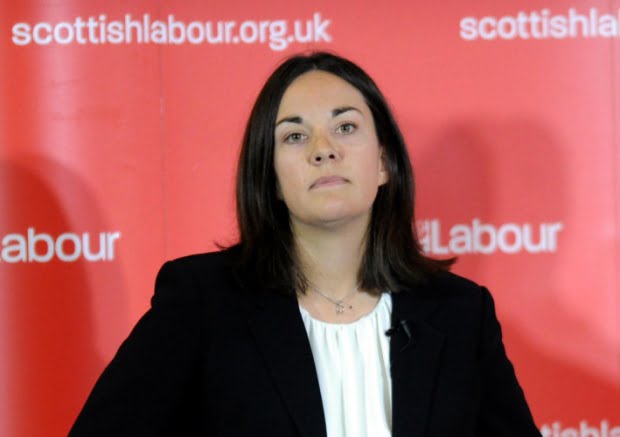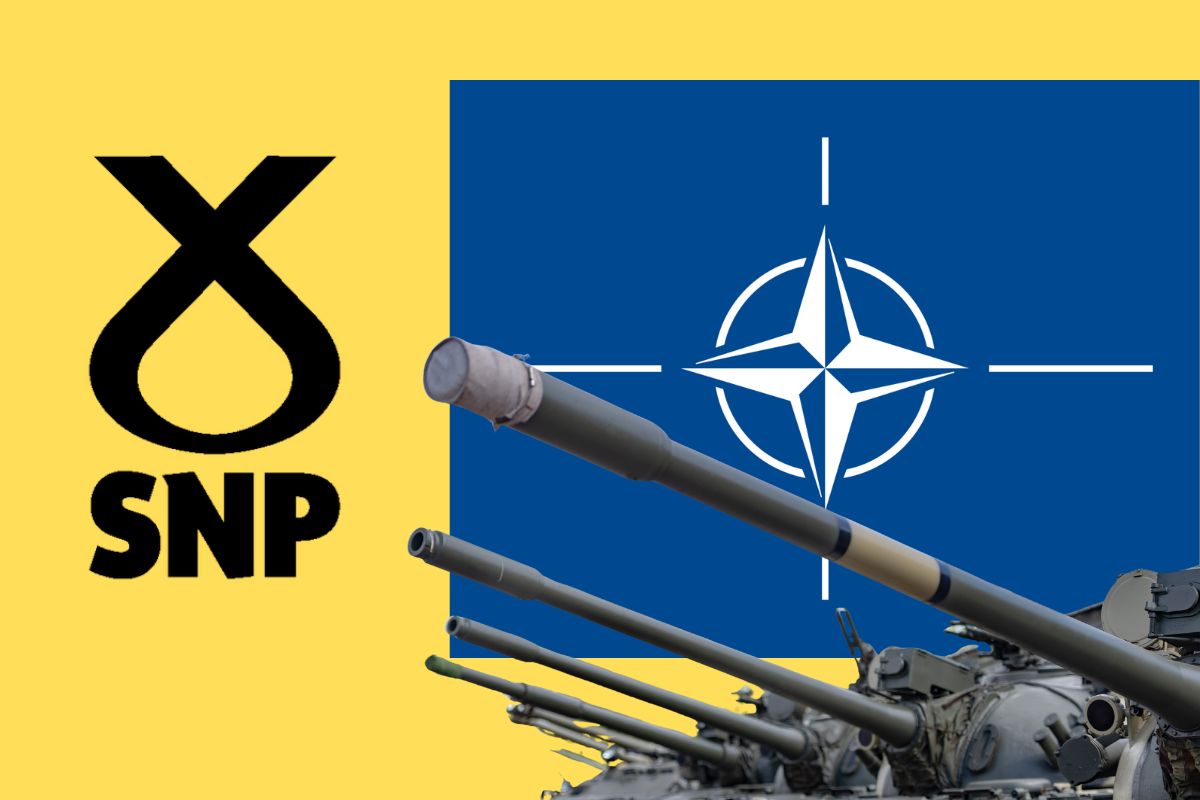Last week’s Scottish parliamentary election results demonstrated the continuing dominance of the SNP over Scottish politics. Labour, meanwhile, were pushed into a humiliating third place – squeezed out by the left-wing, pro-independence stance of the SNP on one side, and by the right-wing, Unionist position of the Tories on the other.
Last week’s Scottish parliamentary election results demonstrated the continuing dominance of the SNP over Scottish politics, as the party won the largest number of seats – 63 out of 129 – and secured 47% and 42% of the constituency and list votes respectively.
Labour, meanwhile, were pushed into a humiliating third place by the Tories – victims to a political polarisation and a collapse of the so-called “centre ground” in Scottish politics. Squeezed out by the left-wing, pro-independence stance of the SNP on one side, and by the right-wing, Unionist position of the Tories on the other, the leftward shift of Labour under Jeremy Corbyn’s leadership proved not to be the panacea to winning back Scottish voters that many in the Labour Party had hoped for.
The rise of the SNP in Scotland, therefore, is no flash in the pan. The political landscape north of the border has been transformed by events – and the tectonic plates will continue to shift on the basis of the crises and class struggles on the horizon in Scotland, in Britain, and internationally.
The looming threat of a new world slump; the splits and scandals within the Tories; the rising tide of strikes and industrial action across the UK; and the battles between Corbyn and the Labour Party: all of these – along with the actions of the SNP leadership, the pressure of the working class, and many other factors beside – will play a role in determining the course of future events within this volatile, turbulent, and uncertain epoch.
Changes
It is important to note, however, that whilst the SNP continues to dominate, the election also signalled a certain amount of change. Firstly, the level of enthusiasm around the SNP seems to have waned somewhat in comparison with the immediate aftermath of the 2014 independence referendum, which saw membership growing to over 100,000 and the party winning 56 out of 59 Scottish Westminster seats in May last year.
Whilst the SNP maintained a very high level of support at this election and increased their constituency vote by 1.1% in comparison with 2011, they also lost six seats, and with it their majority in parliament, as their list vote fell by 2.3%. The proportional representation electoral system and the SNP’s dominance of constituency seats meant that they won few via the list, despite getting by far the most votes.
In terms of the falling levels of enthusiasm, it should also be noted that turnout was 55%, an increase on the 50% turnout at the 2011 Scottish parliament election, but nothing like the 71% turnout seen in Scottish constituencies at last year’s general election, or the 85% rate of the independence referendum.
Caution
Moving away from the statistics, it would be fair to say that there was not a huge amount of buzz around an election where many felt the result had been predetermined months previously – it seemed impossible that any other party would be able to challenge the SNP.
The SNP campaign itself also failed to generate the passion it had at the 2015 general election. As opposed to emphasis on standing up against austerity, this campaign focussed predominantly on the personal capacities and capabilities of first minster Nicola Sturgeon, as the party attempted to stay away from hard policy talk and instead cash in on their leader’s popularity.
Related to this, the party was seemingly very cautious on policies – discussion of a second referendum was avoided, and the SNP leaders said they would not use new tax powers to implement a 45p-in-the-pound rate for the highest earners. Instead, the emphasis was very much upon the party continuing along the same lines of its past nine years in government.
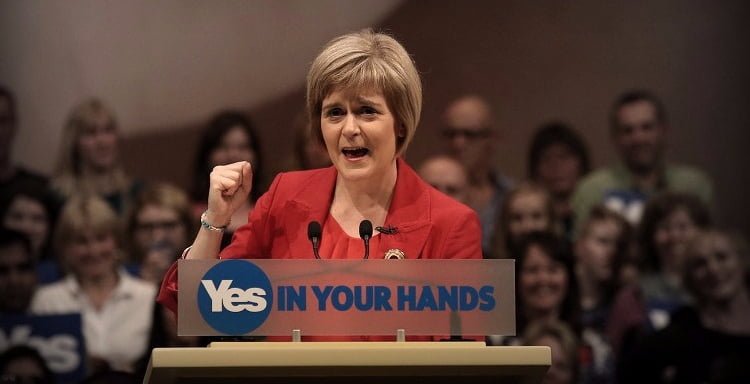
Labour pains
If the SNP’s win was somewhat expected, the real story of the election was the Tories beating Labour to second place. Labour’s woes in Scotland have been well documented, with last year’s General Election seeing a catastrophe for the party, in which the number of Labour MPs in Scotland fall from 41 to 1.
The blow this time was somewhat cushioned by an already poor result at the 2011 Scottish elections, but Labour still lost 13 seats, leaving them with just 24 MSPs, having won only 23% and 19% of the constituency and list votes respectively.
Of course the worst part for Labour was coming behind the Tories. Once the undisputed dominant party north of the border, with strong heartlands across Scotland, Labour are now less popular than a party whose brand had been described as “toxic” in Scotland, and who had been on the fringe of Scottish politics for over 20 years following the poisonous politics of Thatcherism. The Tories won less than Labour on the constituency vote at 22%, but with 23% on the list vote they claimed 31 seats. In comparison with 2011, this is an increase of 16 seats and 8% and 11% on the constituency and list votes respectively.
Squeezed in the middle
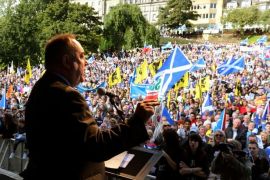 In understanding the two parties’ diverging fates, it is important to go beyond the superficial analysis that attributes the Tories’ success to the likeability of Scottish Conservative leader, Ruth Davidson. It is clear that the national question has come to the forefront of Scottish politics, and that this has combined and interacted with a polarisation to the left and the right.
In understanding the two parties’ diverging fates, it is important to go beyond the superficial analysis that attributes the Tories’ success to the likeability of Scottish Conservative leader, Ruth Davidson. It is clear that the national question has come to the forefront of Scottish politics, and that this has combined and interacted with a polarisation to the left and the right.
Whilst the SNP have managed to galvanise huge votes on the basis of a “social democratic” vision for an independent and fairer Scotland, they have also proved very divisive, with those voters who are against independence becoming increasingly wary and displeased at their dominance over Scottish politics. Particularly for those who are very much committed to the Union from an establishment perspective, the issue of how best to dent the SNP has become a key one. Indeed the Tory line throughout the campaign was that they were the party best placed to provide a strong opposition the SNP.
Whereas the Tories over the past 25 years have been something of an outlier in Scottish politics – and Labour and the SNP have had success in winning the middle class, previously Tory, areas – the recent relative demise of Labour has meant that some of their more conservative, right-wing voters have returned to their natural home. In particular, they have lost the support of those who are presently in a comfortable position and fear losing out on their well-paid jobs, pension, etc. in the event of independence.
Paying the price for past betrayals
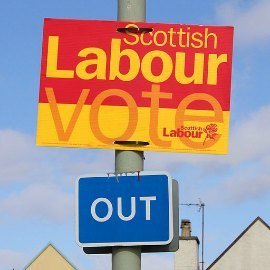 The resurgence of the national question and the leftward trajectory of the SNP has left Labour in between something of a rock and a hard place. After years of Blairism and firmly occupying the “centre ground”, Labour first lost their place as the largest party at Holyrood to the SNP in 2007, with Alex Salmond at the helm of a party keen to re-brand itself as a social democratic force.
The resurgence of the national question and the leftward trajectory of the SNP has left Labour in between something of a rock and a hard place. After years of Blairism and firmly occupying the “centre ground”, Labour first lost their place as the largest party at Holyrood to the SNP in 2007, with Alex Salmond at the helm of a party keen to re-brand itself as a social democratic force.
At 2011, following a drab campaign by Labour – featuring then Scottish Labour leader hiding out in a Subway sandwich shop to avoid hecklers and a Labour lead policy of “carry a knife, go to jail” – the SNP claimed an unprecedented majority at Holyrood.
Following this, of course, was the referendum campaign, which saw thousands of young and working class people brought into politics for the first time on the basis of a Yes campaign emphasising fairness and change, as opposed to Tory Westminster austerity.
Labour, on the other hand, pitched in with the Tories and Lib Dems as part of the pro-union “Better Together” campaign, which was characterised by fear-mongering and reactionary Union Jack flag waving. This, combined with nearly 20 years of “Third Way” (read: right-wing) politics, can be seen as the reason behind large sections of the working class moving away from the Labour Party and towards the SNP.
In this respect, Labour’s latest election results in Scotland are nothing to do with Corbyn and the Party’s shift left nationally, and everything to do with paying the price for decades of complacency and betrayal under Blair, Brown, and Miliband.
Searching for salvation
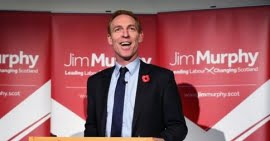 Having lost large sections of its support to the SNP already, Scottish Labour can be seen floundering in terms of how to re-brand the party and win back support. Post-referendum, arch-Blairite Jim Murphy was elected as Scottish Labour leader, promising that his party would not lose a single seat to the SNP at the 2015 general election…and we all know how that ended up.
Having lost large sections of its support to the SNP already, Scottish Labour can be seen floundering in terms of how to re-brand the party and win back support. Post-referendum, arch-Blairite Jim Murphy was elected as Scottish Labour leader, promising that his party would not lose a single seat to the SNP at the 2015 general election…and we all know how that ended up.
After just six months in the job, Murphy stood down as leader following the general election and his deputy, Kezia Dugdale, was elected as his replacement in August last year. Dugdale is something of a politically amorphous figure, described as the “unity” candidate. Although she gave her support to Yvette Cooper at the UK-wide Labour leadership election, Dugdale has since seemed to forget her early criticism of Jeremy Corbyn and has moved towards a more left-wing position.
In an effort to win back votes from the SNP, their election campaigning in Scotland saw Labour attempting to position themselves as the truly progressive voice, promising tax increases for the wealthy, a focus on services, and emphasising the Scottish Labour conference’s vote in favour of the abolition of Trident.
Outflanked on the Left
Where, then, did it all go wrong? Firstly, it is important to note some of the inconsistencies within the Labour election campaign. Whilst progressive policies were emphasised in campaign literature and by Dugdale, regional lists, such as Glasgow, continued to be topped by the same old right-wing faces. Anas Sarwar and Johann Lamont – who in her time as Scottish leader commented on Scotland’s problematic “something for nothing culture” – occupied first and second place.
Also, just days prior to the election, Jackie Bailie, a senior figure in the party, voiced her own opposition to the abolition of Trident in a blatantly selfish move designed to protect her own seat of Dumbarton where the submarine and defence industry is an important employer.
Importantly, despite the election of Jeremy Corbyn as UK Labour leader, there is still a huge amount of distrust towards the Labour Party in Scotland, after decades of Blairism and their role in the referendum. Furthermore, it is plain for all to see that Blairite factions are continually attempting to undermine Corbyn’s leadership, and that the Scottish Labour leadership is to the right of Corbyn.
The SNP, by contrast, have largely maintained their leftward face, and can put themselves forward as a party far more united than Labour in its commitment to progressive policies; for example, all SNP MPs voted in the last year against military intervention in Syria and against Osborne’s austerity bill.
The National Question
 Importantly, Labour also still has little answer to the national question in Scotland, and at this election seemed to attempt to circumvent this vitally important issue. In this respect, whilst failing to gain left-wing voters from the SNP, Labour also shed votes to the Tories, who presented a far more consistent – Unionist – position.
Importantly, Labour also still has little answer to the national question in Scotland, and at this election seemed to attempt to circumvent this vitally important issue. In this respect, whilst failing to gain left-wing voters from the SNP, Labour also shed votes to the Tories, who presented a far more consistent – Unionist – position.
Until Labour provides an answer to the national question in Scotland – offering their full support for the democratic right to self determination, and at the same time arguing for a united struggle against the Tories, against austerity, and for a Socialist Federation of Britain; until Labour provides such a programme, attempts to win back workers and youth in Scotland will be futile.
For now, the working class remains swung behind the SNP, and political polarisation and the national question have meant that Labour has lost votes both to the SNP and to the Tories.
Looking towards the future, it is hard to say how long the SNP can maintain their leftward face; and in many ways their continued success can be connected with a lack of an effective alternative to the Left, as Labour remains distrusted, discredited and contradictory on key questions.
Of course, in the long run the SNP will not deliver on its referendum promises of fairness and social democracy. Scotland remains a highly divided class society, based on a capitalist system where wealth, created by work of the many, is concentrated within the hands of a tiny minority.
To achieve a genuine change – in Scotland, in Britain, and internationally – we need to move beyond social democratic rhetoric and towards systemic change. We need to fight for socialism.

